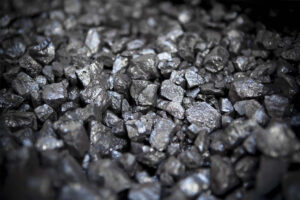
The share of investors who repeatedly buy S1 REIT fund certificates from the developer Standard One has grown to 43% in the five months since the funds began operating, according to the project’s press service.
“We have provided investors with the opportunity to increase their profits by increasing their own share. The minimum additional investment is equal to the cost of one certificate, which is just over UAH 1,000. But despite our expectations, the average amount of repeat sales is significantly higher, at almost UAH 90,000,” said Viktor Boichuk, commercial director of S1 REIT, in a press release.
He noted that currently, the vast majority of investors are people with investment experience who already have a certain portfolio of assets.
“For them, S1 REIT is an opportunity to diversify their asset portfolio with a relatively small check. In the first weeks of our work, investors went through a ”getting to know you” phase, studying us and our offer. Now we see their confidence growing,” Boichuk added.
He added that the project plans to scale up by reaching a new audience—Ukrainians who have not yet had experience in investment activities due to a lack of knowledge or significant start-up capital.
“The key advantage of S1 REIT is its accessibility. The entry threshold is the equivalent of $3,000, which is significantly less than the initial investment in the Kiev real estate market,” said the top manager.
As reported, in April this year, Kiev-based developer Standard One, which specializes in Build-to-Rent projects, announced the launch of a new product, S1 REIT. This is an investment tool that allows you to become a co-owner of square meters in profitable S1 buildings without having to personally manage the assets. Currently, S1 REIT has two open funds: S1 VDNH, with a planned yield of 8.2% per annum in US dollars, and S1 Obolon, with a yield of up to 10% per annum.

In January-August 2025, imports of zinc and zinc products decreased by 3% to $37.093 million (in August – $3.889 million).
Zinc exports during this period increased to $888,000, which is more than four times higher than in the same period of 2024 ($201,000).
Pure zinc metal is used to recover precious metals, protect steel from corrosion, and for other purposes.

The illegal segment of the gambling market accounts for 39% to 53% of the market, according to the results of the first studies conducted in August–September 2025 by Kantar, Gradus, and Factum on behalf of the Association of Ukrainian Gambling Operators (AUGO), according to its press release on Thursday.
“The international company Kantar estimated the share of the illegal gambling market in Ukraine at 52.1%, Gradus at 39%, and Factum at 53%. Unfortunately, the results turned out to be much worse than expected. If the legal market is worth approximately UAH 59.6 billion per year, then the illegal market is worth between UAH 37.72 billion and UAH 66.53 billion,” said AUOGB President Oleksandr Kogut, presenting the main results of the research during a meeting of the Temporary Investigation Commission in the parliamentary committee on finance, tax, and customs policy.
According to him, 90% of all illegal casinos are of Russian origin.
The results of the research conducted by the three companies coincide with the estimates of the international company H2 Gambling Capital, which has determined the current level of the illegal gambling market in Ukraine to be 45.6% and forecasts that this figure will grow to 58% by 2030, according to the release.
Kogut clarified that independent estimates of the size of the “black” market from three research agencies were obtained by the Association at the request of the Ministry of Digital Transformation/Playcity. The representative study was conducted over two weeks using various methods proposed by the three agencies. Between 800 and 2,500 respondents took part in it.
It is noted that the survey revealed the main factors why Ukrainians choose illegal online casinos, such as: speed of payouts; the ability to avoid paying taxes; ease of registration and anonymity; the ability to play using cryptocurrencies; the absence of age and behavioral restrictions (access for gambling addicts and teenagers under 21) and the absence of betting limits.
According to the AUOGB, research has shown that any restrictions or inconveniences in “white” legal casinos lead to an outflow of players to illegal online casinos.
Traffic analysis showed that about 25,000 Ukrainians switch to unlicensed online casinos every quarter. An additional fundamental reason is that illegal operators have better conditions: they are not restricted in advertising and marketing tools, while advertising by legal operators is strictly regulated by law, the Association notes.
According to Kogut, the key problem in combating the “black” market is the failure of telecom service providers to comply with the decisions of regulators (NCCEC, Playcity, NSDC) regarding blocking and the lengthy procedure for blocking illegal sites: it takes at least 10 days to close a site, while owners of illegal casinos create mirror clone sites in 1-2 days.
“Political will and strong technological solutions are needed to block such resources more quickly,” the Association’s president emphasized.
AUOGB Vice President Oleg Arestarkhov believes that politicians are currently ignoring the growth of the “black” market in their rhetoric, instead focusing their efforts on criticizing the legal industry.
“We are faced with an endless barrage of completely unfounded accusations of alleged tax evasion by individual operators. This is, in essence, a targeted bullying of the ”white” industry, which pays 19-20 billion hryvnia in taxes every year. It is clear to us that discrediting the legal market is beneficial to illegal operators,” his words are quoted in the release.
According to Arestarkhov, politicians must remember that their task is to protect Ukrainians who may end up on illegal sites. “Today, these people are completely unprotected, players constantly encounter cases of financial fraud and outright dishonest play, when winnings are simply not paid out,” he said.
According to the AUOGB, the total revenue of the Ukrainian IGaming market in the first half of 2025 amounted to UAH 27.1 billion. According to the State Tax Service, which was announced at the TSK, the amount of taxes paid by the industry for 8 months of 2025 exceeded UAH 13 billion.
The Association of Ukrainian Gaming Operators is an independent self-regulatory organization that brings together leading licensed operators in the industry, who pay more than 57% of all tax revenues in the industry. The main goal of the AUGO is to establish transparent rules for the functioning of the market and to combat illegal business.
Since February 2025, state policy in the field of gambling has been formed and coordinated by the Ministry of Digital Transformation. On March 21, the Cabinet of Ministers decided to create a new central executive body, the Playcity agency, which is officially subordinate to the Ministry of Digital Transformation and replaced the previous regulator, the CRAIL, on April 1.
The previous regulator, KRAIL, issued 7,217 licenses for the right to organize and conduct gambling activities and simultaneously terminated (canceled) 4,123 licenses.

DTEK, together with the American company Fluence, has built a 200 MW energy storage facility (ESF), which is currently the largest such complex in Ukraine, the energy holding company reported.
“The DTEK Group has commissioned 200 MW of ESS facilities, created in partnership with the leading American company Fluence, a global leader in energy storage. The company has connected six new facilities of various capacities, ranging from 20 to 50 MW, to the power grid in the Kyiv and Dnipropetrovsk regions,” DTEK said in a press release on Thursday.
According to the release, DTEK’s investment in the construction of the complex, which lasted from March to August 2025, amounted to EUR125 million, and in total, the system will be able to store 400 MW*h of electricity, which is enough to supply 600,000 Ukrainian homes for two hours.
“In the context of massive attacks on the Ukrainian power system, the role of energy storage systems has become as fundamental as generation itself. The National Renewable Energy Action Plan until 2030, adopted by the government, clearly defines the need for such installations, and today we are seeing strategic goals being implemented. I am grateful to the DTEK Group for its proactivity in this matter and to our American partners at Fluence for their advanced technologies, thanks to which each new megawatt of storage acts as a shield for the entire power system. This means greater security for Ukrainians and fewer risks of emergency blackouts,” commented Ukrainian Energy Minister Svitlana Grinchuk.
DTEK CEO Maxim Timchenko called the launch of the UZE complex a historic step for the Ukrainian power grid, which will determine its development for years to come.
“We implemented it together with Fluence, a global leader in energy storage. In cooperation with our American partners, we are integrating the most advanced technologies to make Ukraine’s power system more reliable and resilient,” he said.
According to Fluence CEO Julian Nebreza, this is a joint contribution to creating a stronger, more resilient, and decentralized energy system that will ensure Ukraine’s long-term stability.
“We are honored to be working with DTEK on this landmark energy storage project. The extraordinary determination and efficiency that DTEK has demonstrated in implementing this project is truly inspiring. This achievement is a testament to resilience and a symbol of what can be achieved through close international cooperation. Even in these extremely challenging times, innovation and partnership can pave the way to greater energy security,” Nebreda emphasized.
As reported, DTEK and Fluence announced their intention to implement a project for modern energy storage systems (ESS, energy storage, energy storage facilities) in Ukraine with a capacity of 200 MW and a cost of EUR140 million in January 2025. It involved six energy storage facilities.
In June 2025, the DTEK energy holding received a EUR67 million loan from a consortium of Ukrainian banks consisting of Oschadbank, PUMB, and Ukrgasbank (UGB) for the construction of an 180 MW ESS.
At the time, the energy holding company noted that this was the first loan of this scale in Ukraine for the development of energy storage technologies, and the project itself was one of the largest in Eastern Europe.
DTEK won a special auction held by NPC Ukrenergo for the provision of automatic frequency restoration reserve (AFRR) services with 140 MW of UZE. Under the terms of the auction, NEC will purchase these services at the auction price for five years, starting October 1, 2025.
Fluence, headquartered in Washington, was founded in 2018 by Siemens and AES Corporation. The company has built approximately 35 GWh of energy storage capacity and approximately 30 GW of renewable energy sources.
Fluence has significant experience in integrating energy storage facilities into national energy infrastructures, with a portfolio of energy storage projects with a capacity of 201 MW in Lithuania and 450 MW in Germany.
DTEK was established in 2005 to manage the energy assets of Rinat Akhmetov’s System Capital Management (SCM, Donetsk) group. The corporation has been delegated the functions of strategic management of the group’s enterprises, which have formed a vertically integrated chain of coal mining and enrichment, electricity production and sales.

In January-August 2025, imports of lead and lead products increased 9.1 times to $5.58 million (in August – $859,000).
At the same time, exports decreased by 13.7% to $6.313 million (in August – $832 thousand).
Lead is currently mainly used in the production of lead-acid batteries for the automotive industry. In addition, lead is used in the manufacture of bullets and some alloys.

Rail passenger transport in Ukraine, which is currently monopolized by Ukrzaliznytsia, requires the introduction of a Public Service Obligations (PSO) mechanism – predictable compensation for subsidized transport, according to Yulia Sirko, first deputy chair of the parliamentary committee on transport and infrastructure (Holos faction).
“There are many passengers who pay either 0 or 50%, for example, as UBD and so on. We have a number of beneficiaries who use transport, including rail, and this is, de facto, not compensated by the state or local authorities,“ she said at an expert discussion held by the Center for Transportation Strategies on ”Rail Freight Tariffs in 2025-2026” on Wednesday.
According to her, without the implementation of a set of PSO laws, Ukrzaliznytsia will be forced to constantly turn to the government and the Verkhovna Rada for funding for unprofitable passenger transportation.
Sirk added that PSOs will make this area transparent and recalled that Ukraine has committed to implementing these standards as part of the Ukraine Facility program.
“Unfortunately, passenger transportation continues to be unprofitable. This requires Ukrzaliznytsia to optimize all processes, optimize its operational activities, understand capital investments for 3-5 years, and understand unprofitability for 3-5 years,” the first deputy chair of the relevant parliamentary committee also noted.
As reported, Ukrzaliznytsia’s operating loss from intercity and international passenger transportation last year amounted to UAH 8.81 billion with revenues of UAH 10.67 billion, while from suburban transportation it amounted to UAH 9.31 billion with revenues of UAH 0.52 billion.
The Verkhovna Rada recently amended the state budget for 2025 and allocated UAH 8 billion in bank income tax to Ukrzaliznytsia, which should have gone to the Kyiv budget. In May this year, Ukrzaliznytsia also received UAH 4.3 billion from the budget to support passenger transportation during the war.